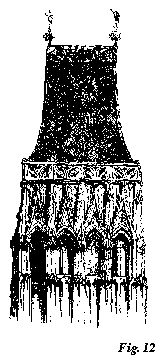44 ARCHITECTURE AND PAINTING
to them a great part of their interest: all these great and magnificent masses of architecture being repeated on a smaller scale by the little 
* Among the various modes in which the architects, against whose practice my writings are directed, have endeavoured to oppose them, no charge has been made more frequently than that of their self contradiction; the fact being, that there are few people in the world who are capable of seeing the two sides of any subject, or of conceiving how the statements of its opposite aspects can possibly be reconcilable.1 For instance, in a recent review, though for the most part both fair and intelligent, it is remarked, on this very subject
fields with avenues of trees between them, and lanes so loaded with blackberries that the hedge on each side looks like a piece of Florentine mosaic of bright black and red. But I am put out by the weather; it has grown so cold that I can only make rapid notes with greatcoat and gloves on. ... I have pretty well examined this cathedral inside and out, there is not much detail about it, but it is marvellously interesting, a pure and complete example of the very earliest French earliest French Gothic.”
See also the extract from Ruskin’s diary at Coutances, given in Vol. VIII. p. xxxi.]
1 [For some other remarks on this charge of the reviewers of his architectural works, see Introduction to Stones of Venice, vol. i. (Vol. IX. p. xlii.). On the general subject of his alleged self-contradiction, see above, Introduction, p. li.]
[Version 0.04: March 2008]